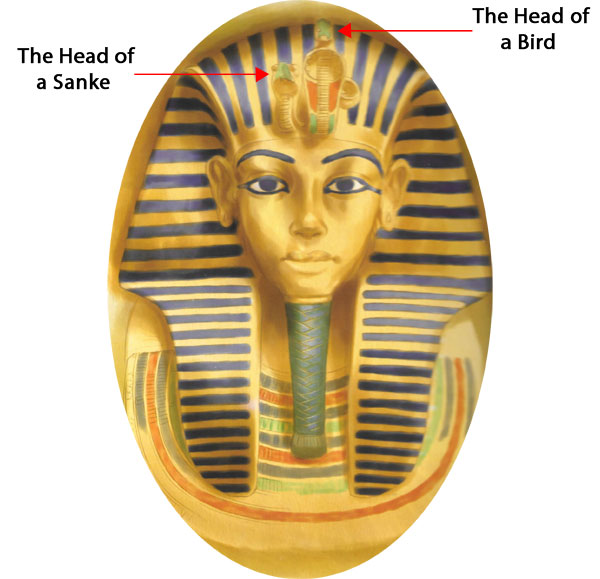Learn all about ancient Egyptian mummification. Know interesting facts about how the ancient Egyptians made mummies.
First, let’s know a little about where these mummies were found and what were the other precious things found with the mummies.
Because they believed that they would continue to live when they had died.
1) Bright pictures
2) Things belonged to the dead person
3) The mummy of the dead person
4) Statues
Following are a list of the things found by the archaeologist, Howard Carter in king Tutankhamen’s tomb, in 1922.

This is Tutankhamen’s death mask. It is decorated with the head of a bird and the head of a snake. The bird’s head represents southern Egypt whereas the snake’s head represents the northern Egypt. This means that Tutankhamen ruled the whole of Egypt.
(Courtesy: Pictures scanned from the book ‘Egyptology’)
To treat a dead body with a preservative substance (chemical addition) in order to stop it decaying is called mummification.
Embalming
Ancient Egyptians mummified dead bodies because they believed that when a person died, his or her soul would need to use the body again.
Steps of Mummification | |
| Step 1 | Parts of the insides of the dead body were taken out. |
| Step 2 | Body was filled with spices and pickled for 70 days. |
| Step 3 | Body was washed. |
| Step 4 | Body was wrapped from head to foot in linen cut into strips. |
| Step 5 | Body was put inside a wooden case made in the shape of human being. |
| Step 6 | The wooden case was sealed. |
| Step 7 | Wooden case was stood up against the wall and stored in a burial chamber. |
(Courtesy: Pictures scanned from the book ‘Egyptology’)
The Greek writer Herodotus
1) Special jars which Ancient Egyptians used to store the parts taken out of a dead body were called canopic jars.
2) Canopic jars were buried with the person.
Poorer people
Pets, especially cats
Many Ancient Egyptian coffins were decorated with pictures and hieroglyphics.
(Courtesy: Pictures scanned from the book ‘Egyptology’)
Nakht was a weaver who worked for one of the pharaohs in Ancient Egypt.
The hieroglyphs on his coffin tell us that he was a weaver of a pharaoh.
They discovered that the mummy had not been pickled and Nakht’s insides were still in the body.
1) Nakht was about 16 years when he died.
2) Modern doctors have found out that he might have breathed in dust and sand while working in a stone quarry.
3) He contained parasites, including a tape worm, and suffered from malnutrition.
Organisms living on another organism and harm it.
E.g. – Tapeworm
1) It is a flatworm with a long ribbon-shaped segmented (divided into parts) body that lives in the gut of vertebrate animals like domestic animals (pigs) and humans.
2) Humans can get infected, especially by eating uncooked meat containing tapeworm larvae.
1) Being unhealthy and having physical harm due to lack of nutrients in the diet, or having too much of unhealthy foods is called malnutrition.
2) Malnutrition can be caused by parasites like tapeworm.
Also, click here to read more about Ancient Egypt.